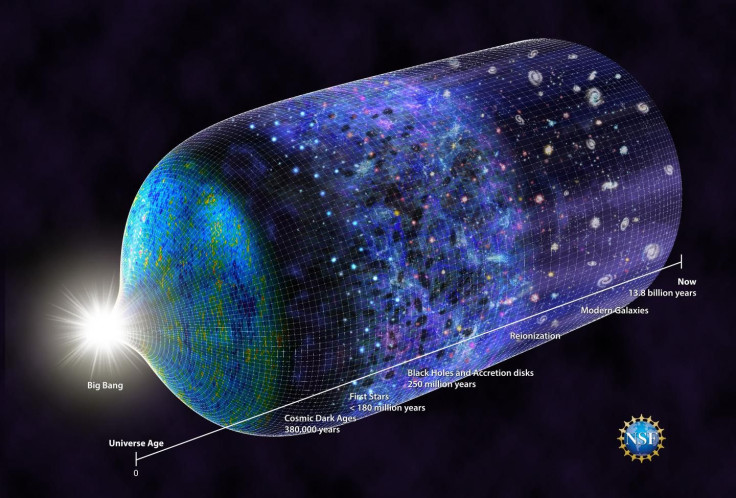NASA Hubble Data Deepens Mystery Of Universe’s Expansion After Big Bang

New data gathered by NASA's Hubble Space Telescope has revealed discrepancies in the techniques used to measure the rate of expansion of the universe. NASA's new study supports the idea of introducing new theories to explain the forces that shaped the universe after the Big Bang.
Since the beginning of time, the universe has been getting bigger every second. Space between galaxies is stretching like an elastic rubber band. And one big question that has puzzled scientists is how fast the universe is expanding exactly.
As astronomers use the Hubble telescope to find answers to this question, a scientist has uncovered new mysteries after studying observations that did not match what has been predicted.
Based on Hubble law, the expansion of the current universe is faster compared to that of the universe 13 billion years ago. The calculation of the early universe's expansion rate is based on the measurements done by the European Space Agency (ESA)’s Planck satellite.
The difference between the Planck and Hubble calculations had been determined by various scientific papers over the past decades.
#Anomalyoftheday. The results from the two methods of determining the cosmic expansion rate now differ by a distance significant enough to falsify the standard model: https://t.co/JEJKh4ePv3 via @physorg_com
— Mike McCulloch (@memcculloch) April 26, 2019
However, it has been unclear whether the differences in measurements are caused by the different techniques, errors or something else. This led the scientist to determine the reason behind the mismatch.
The latest Hubble data seems to highlight the need for "new physics" to explain the difference in the measurements.
"The Hubble tension between the early and late universe may be the most exciting development in cosmology in decades," lead researcher and Nobel laureate Adam Riess of the Space Telescope Science Institute (STScI) and Johns Hopkins University, in Baltimore, Maryland, said. "This mismatch has been growing and has now reached a point that is really impossible to dismiss as a fluke. This disparity could not plausibly occur just by chance."
NASA scientists explained that the one possible explanation for the mismatch is the unexpected appearance of dark energy in the young universe, which is thought to comprise 70 percent of the universe.
Suggested by astronomers from John Hopkins, the theory called “early dark energy” proposes that the universe evolved in three distinct points. They believe that that dark energy existed during the first second after the Big Bang and pushed matter into different directions, kicking off the initial expansion.
New theories may be needed to explain the forces that have shaped the cosmos.
— Radiation Research Society (@RRS_RadRes) April 29, 2019
Hubble data highlights discrepancies between what scientists predict and what they observe about the speed of the universe's expansion. https://t.co/renoMKX4Ho
Furthermore, dark energy may also be the reason for the acceleration of the universe’s expansion rate. The new theory proposed that there was a third dark energy burst shortly after the Big Bang that expanded the cosmos at a much faster rate than astronomers thought.
The findings of the study have been accepted for publication in The Astrophysical Journal.
The Hubble Space Telescope is a project of international cooperation between NASA and ESA (European Space Agency). NASA's Goddard Space Flight Center in Greenbelt, Maryland, manages the telescope. The Space Telescope Science Institute (STScI) in Baltimore, Maryland, conducts Hubble science operations. STScI is operated for NASA by the Association of Universities for Research in Astronomy in Washington, D.C.
© Copyright IBTimes 2025. All rights reserved.





















